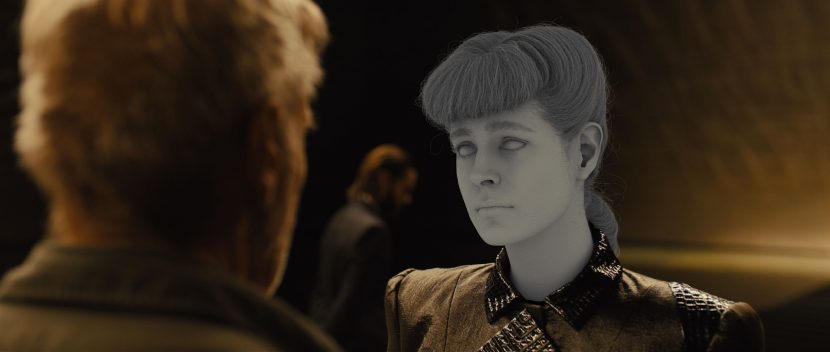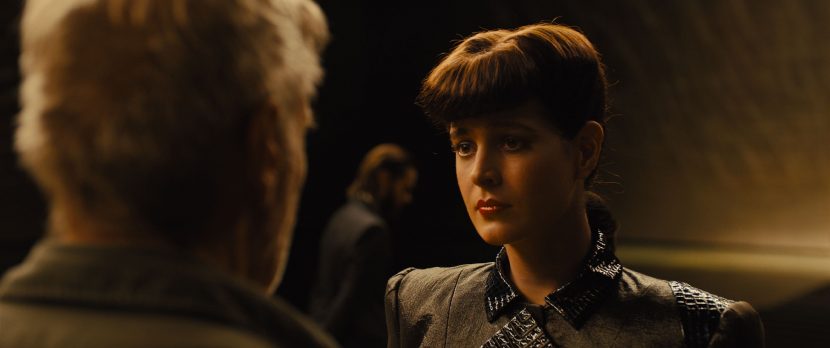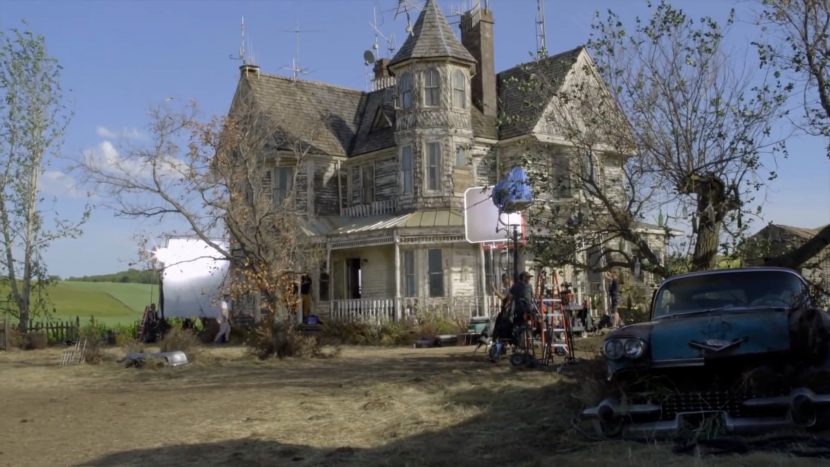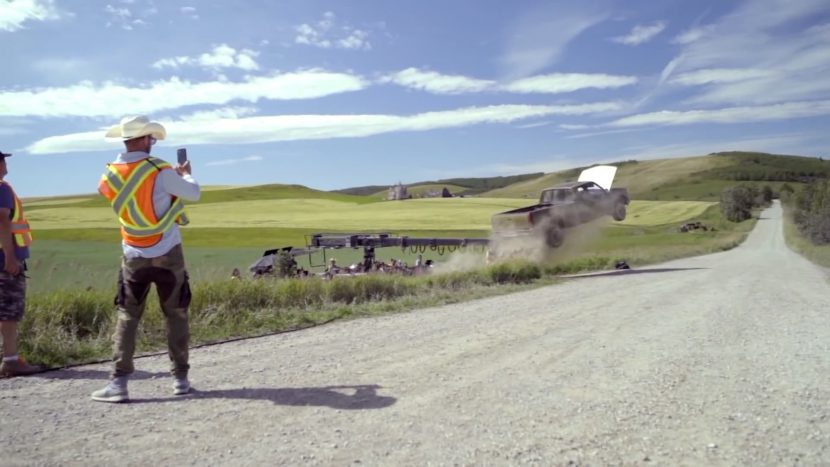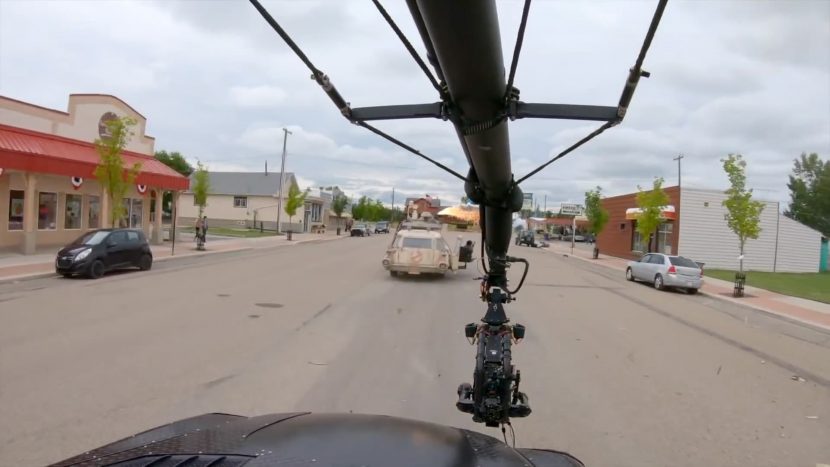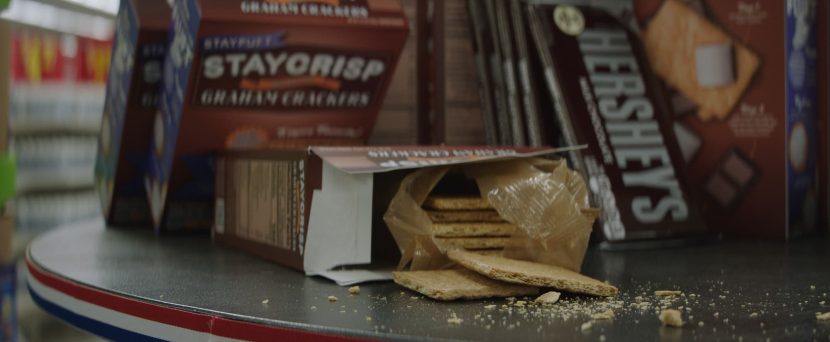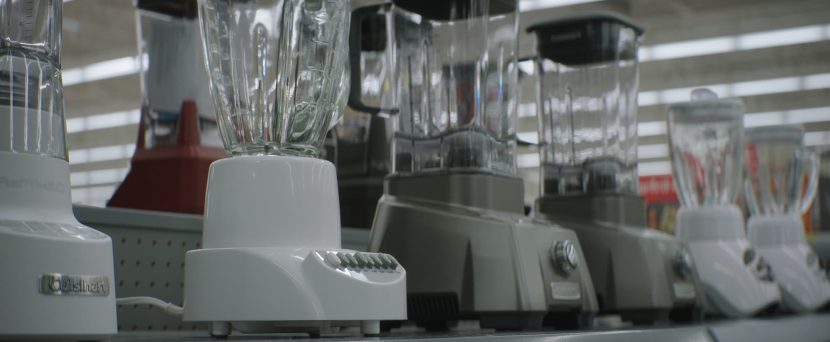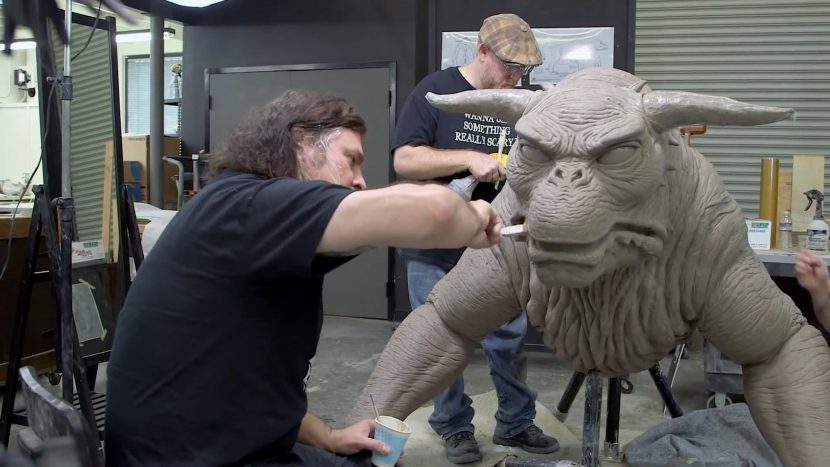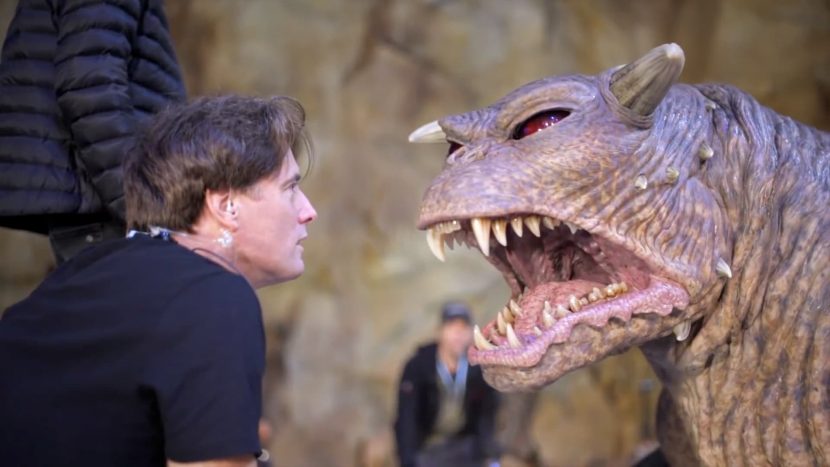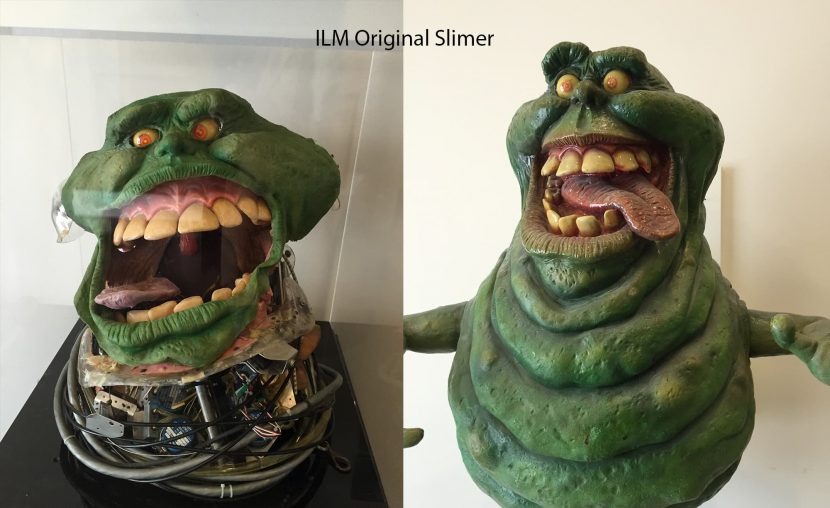In Ghostbusters: Afterlife, when a single mom and her two kids arrive in a small town, they begin to discover their connection to the original Ghostbusters and the secret legacy their grandfather left behind. The film is written by Gil Kenan & Jason Reitman. The film builds on the original Ghostbusters films which first premiered in 1984, written by Dan Aykroyd and Harold Ramis.
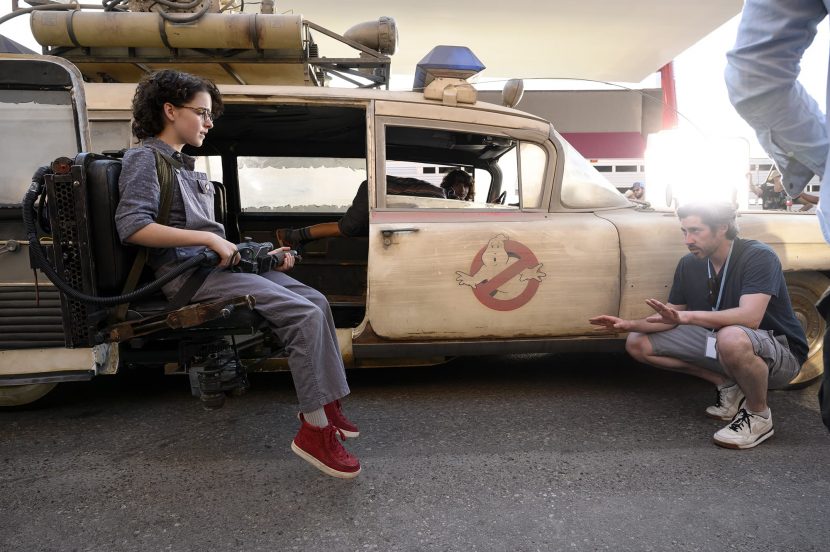
Jason Reitman directed the film, which was originally the creation of his father Ivan Reitman. As Ivan also produced on Afterlife, both were on set and involved in honoring the original films.
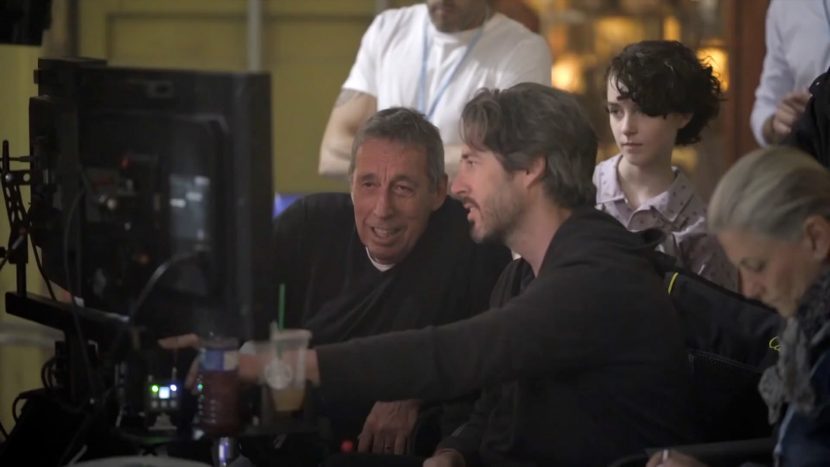
SPOILER ALERT
To help bring his vision to life, Jason Reitman brought on renowned visual effects supervisor Sheena Duggal. Unfortunately, Sheena had to move onto Venom just prior to filming and so she handed over to visual effects supervisor Alessandro Ongaro who started 10 days prior to principal photography. Alessandro had just finished MiB and he was a huge fan of the original films. Both supervisors worked as a close team with the director and the production designer Francois Audouy to solve the film’s visual and creative challenges. The initial team was a creative powerhouse that came together for an extended period to solve many of the film’s issues during pre-production. Sheena took on the responsibility of working together with François Audrey, to help design the film’s ghost characters. “I was working with some of the best concept artists from around the world,” says Sheena. “Jason knew how he want the main ghost characters to make him feel, but he didn’t have a visual language to articulate what they looked like. So, a large body of concept art was created by multiple artists and VFX vendor art departments and I was able to gain a greater understanding of what he was looking for.” A lot of this key art tracked through to the final look of the film.
Both VFX supervisors then worked solving the complex VFX with DNEG and MPC, as the two main VFX vendors. “Aharon Bourland VFX supervisor at DNEG is amazing – love her, she is so smart and talented,” commented Duggal. “My vfx producer was Jacquie Barnbrook, I had some talented women around me!” Alessandro agrees that the two facilities did an outstanding job in providing cutting-edge VFX that visually and creatively remained connected to the original two, but with modern production values that kept the imagery contemporary for a modern audience. This was particularly reflected in the advanced digital human work in creating Egon Spengler. The director was keen to not only service the needs of the story but be respectful to the family and friends of actor Harold Ramis, who had sadly passed away.
Egon Spengler /Harold Ramis
Egon Spengler appears at the end of the film thanks to an incredibly detailed approach from MPC. The team had gone to MPC based on the strong work the company had done in replicating Rachael in Blade Runner 2049 for Director Denis Villeneuve in 2017. For that film, MPC had the advantage of Sean Young being still alive and able to contribute. But sadly, Harold Ramis passed away in 2014 at the age of 69. It was also the case that there were never any digital scans of the actor when he was alive.
For obvious security reasons, Egon in Afterlife was only referred to as the ‘Old Farmer’ during filming. The creative decision was made to not try and model the Old Farmer on Harold near the end of his life, but rather model the character on an imagined older version of Egon Spengler from the original two Ghostbusters films. The actual Harold Ramis as he aged, was slightly heavier in build than someone who had spent years outside farming and was weathered by the sun. The team wanted to reflect an older, wilder version of the character of Egon, and his lived experience – rather than an older version of the actor. For example, this can be seen in how the team ended up grooming Egon’s hair for the old character. His hair is wild and reflects Egon not Ramis.
For the Ghost of Spengler, Egon doesn’t speak so selling the emotion needed to rely on very subtle animation to capture the human emotions. “He had to feel viscerally real even with the spectral light effects applied,” Sheena comments. “We had to approach this character with a great deal of sensitivity, not only is Harold like a family member, Jason knew that if we weren’t able to capture the essence and emotion in the CG character the scene would never work.” Harold Ramis’s Estate was very generous in supplying the team with photographic and video imagery of Harold that was integral to the creation of a believable likeness.
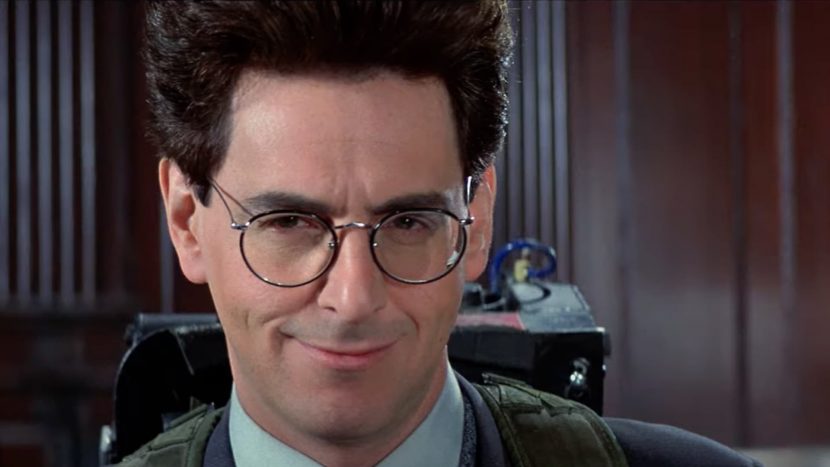
The MPC team hand-built the Old Farmer by first creating a very accurate digital Harold Ramis cira 1984. This was never intended to be seen, but it was to provide both proof of similarity and an ability to correctly rig the character to act as Egon. In the final film, the MPC animators manage to deliver a very strong acting performance that reads as if it was by Harold Ramis, in part because they first tested themselves matching the 1984 Egon with a digital copy. The facial rig was built on a standard MPC face rig. The MPC research team then found examples of each key FACS shape in just the filmed performances from the original Ghostbusters films. This was helped by the production providing previously unseen and unused outtakes and clips from the original film shoots. Armed with the Ramis FACS shapes and a detailed model they then re-animated key performances of the actor in character. As the model was never going to be seen by an audience, the digi-double was not fully textured. To present their test they, therefore, turned 6 or 7 clips from the original film into B/W and composted in a monochrome digital Egon to these shots. This was a major turning point for both MPC and the Director. The shots were remarkably effective, and this very successfully carried the team into the task of aging the digital Egon and finally texturing him. “One day I remember calling Jason and Ivan (Rietman) and asking them to play the clip,” recalls Alessandro. “And they asked me, ‘why are you making us look at the ’84 clip?’ and that’s when I knew we had it!”
Dan Zelcs led the team at MPC, as the Character and Asset Supervisor for Egon, recalls the moment they showed the black and white Egon, nicknamed the ‘Young Farmer’. “It was a crucial moment, we’d match a handful of shots and then we got one that we felt was working really well,” he recalls. “And once we knew we had captured the likeness and that everyone was really happy, we knew we could move forward and make the old farmer.” The team was then able to animate and match the young farmer rig to an actual Ramis expression, and then, as both farmer models shared the same rigging and topology, they could apply that animation to FACS shapes of the older farmer if need be. “We were able to find out what were Harold Ram’s signature aspects,” Dan comments. “For example, how the raiser of his nasolabial fold – cheek raiser shapes worked together. If we were to just go and sculpt one shape, one full head perfectly from a reference, in a specific pose, that wouldn’t help us animate him.”
The MPC team used a mixture of Maya and Zbrush. “There is a dance between making sure that the topology is sitting on the key lines of the very fine wrinkles and then going in refining the sculpt and then shifting the topology around again, so that it, it fits,” Dan explains. “There’s definitely an enormous amount of back and forth between Maya and Z-brush, especially when it got into the really, really fine details.” The MPC team ended up subdividing their mesh heavily, twice their normal amount so that they got the dynamic wrinkles actually in the blendshapes. Given the non-linear nature of combinatorial FACS, Dan also decided to add a subtle layer of skin simulation on top of the keyframes blendshape animation to provide dynamic subtlety.
Alessandro was keen to animate and do Lookdev as if there was no ghost treatment, and make it work, “I said: think of this as a digi-double, and only when Jason and Harold’s family agreed it is right, we can move on and decide how much Ghost effect to add.” This also had the advantage of addressing just one thing at a time, and not hunting for a ghost look while trying to also find the right expressions for Egon.
At the end of the film, the reconciliation of Egon with his daughter is a quintessential plot point, and MPC had to communicate all the subtext of the final scene, without being able to use any dialogue for Egon. The character animators had to provide faithful acting that was both true to the scene and take the acting choices of Bob Gunton and blend them with uniquely Harold Remis expressions.
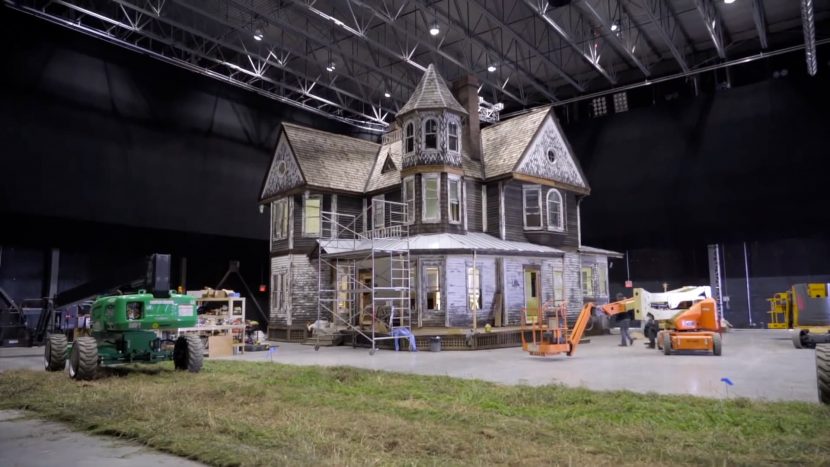
At the start of the film, a bearded elderly driver obscured in the darkness of his truck’s cabin, is chased by an unseen creature that is eventually able to sideswipe the vehicle. As this Egon is only glimpsed and never really seen, Bob Gunton was not hired for these shots. These were to have been all 100% in camera but given the huge success of the final digital old farmer, as a late request, MPC did go back and add some digital Egon into some of these shots, in particular the glancing shot in the rear-view mirror.
Shotboarding
While most films do storyboards and previz, Ghostbusters benefited from the Director doing ‘Shotboarding’. Here the director would take a series of key photos to explore a space and find good framing and blocking. Working in harmony with the DOP, this process allowed the VFX team to have a very accurate understanding of what would be needed. These shotboards were further helped with some traditional storyboards and some techviz, and were only used as a starting point for action on the day, but they still provided an extra and very strong dimension of visualization. ” The whole film was photo-boarded or shotboarded, we did have some storyboard for key sequences, but I don’t recall any previz for the film that we used,” Alessandro recalls. “Jason went to the locations with actors and himself took photos of the key moments of each scene,.. imagine a storyboard but done with photographs, and that became part of our visual bible… Jason really had a vision for this film.”
Gozer
Gozer was fully digital from the neck down. While the actor did have a costume on set, in the end, the dynamics and lighting that allowed Gozer to have the level of presence on screen meant that a fully digital suit was preferred. This also allowed for a more surreal appearance as the team could lengthen her limbs. So while the team remained faithful to the performance, the composited face was often placed higher in the shot, and the leg and arms lengthened.
Sheena and the creative team did an experiment with a more ethereal look for Gozer, working with DNEG they pioneered a new technique. “I designed something that was quite complex, where the character was time-sliced. So as Gozer moved in space, different parts of the character sliced forwards and backwards in time, which we called Time-Displacement” Sheena explains. “DNEG came up with something really pretty clever. They came up with this wonderfully creative and technical solution in Houdini. DNEG did an outstanding job, but it just wasn’t right for this project. Jason and I discussed it, and there was one particular movement test that we did, that was moving the camera at the same time as doing the effect that gave really super cool results, but it was just not right for Afterlife” Achieving the final Gozer fell to Alessandro. “We really wanted to give the impression of what was in the 1984 film, but with a twist from the newest technology,” he explains.
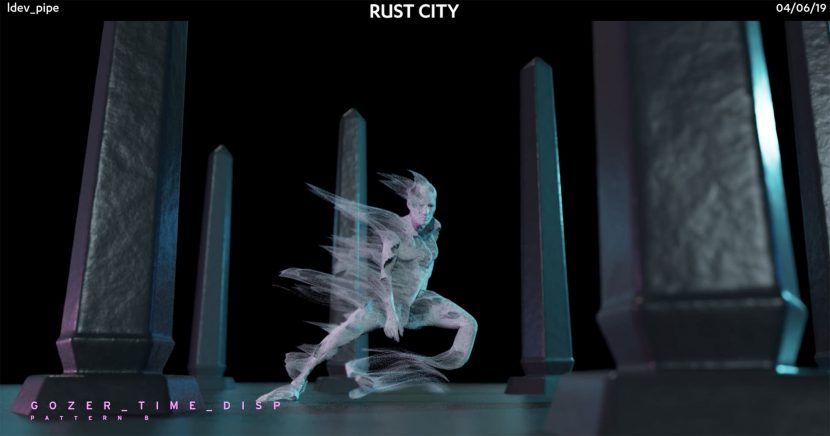
Ecto-1
Trevor finds Ecto-1 in the barn under a tarp. Trevor repairs Ecto-1 and takes it for a joy ride in a field of corn. The field and the driving sequence were in-camera as the art department had planted corn months ahead. At the end of the cornfield sequence, Trevor loses control of the Ecto-1 and flies off and hits the road.
For the jump out of the cornfield onto the dirt road the Ecto-1 is a digital replacement. The famous and iconic Ecto-1 is actually built around an old Cadillac ambulance. For the jump, the production found a proxy truck, with the same wheelbase and fitted it with correct tires. The truck was then filmed jumping and the visual effects team turned into the Ecto-1. “I brought in stunt driver Jeff Sanca, who’s a good friend of mine and a stunt guy that jumps cars,” commented Stunt coordinator Guy Bews. “We designed and built a ramp into the approach coming out of a farm field of oats. We tested it all to make sure that we had the right distances, all that stuff, to make that car land on the road, be able to still make that turn and go down the road.”
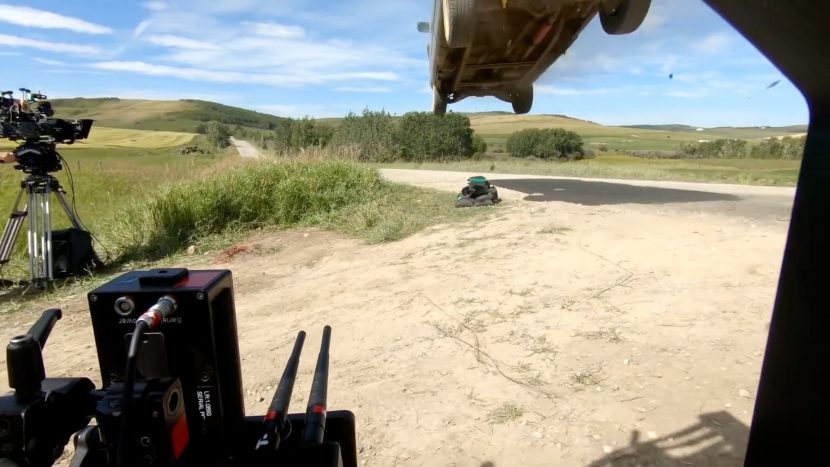
“That was a fun day,” recalls Alessandro. “Again, the approach was to get as much practical as we could and extend it with visual effects. The car was a truck with the same wheelbase as the Ecto. The driver did the jump twice, with five cameras on the car each time.” The car was driven at about 40 miles per hour for the jump. Later, Ongaro’s team replaced the top of the truck with an animated Ecto-1. The truck jump happened twice, but in one jump it landed and wiped out a camera, luckily the memory card was undamaged.
The main digital work when the Ecto-1 was driving in town was removing the stunt driver who was sitting on top of the car is a special ‘secondary’ driving rig. It was this rig and driver who actually controlled the car, allowing for the director to capture the cast on location appearing to be really driving.
Mini Stay Puft Marshmallow Men
In the film when Gary goes to Walmart to pick up some ice cream after his date with Carrie. He discovers several mini StayPuft marshmallow men roaming the store causing chaos like a bunch of gremlins.
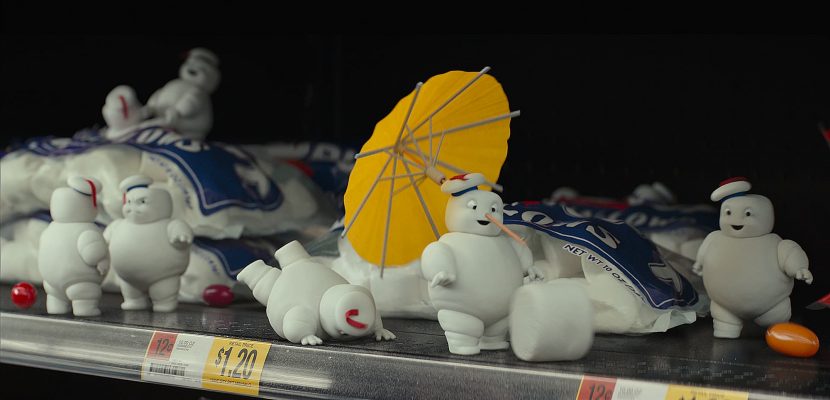
He comes upon the demon dog he released earlier and gets chased out to his car and attacked just like the scene from Cujo. The Mini Stay Puff guys were primarily handled by DNEG but MPC was brought in to handle some additional shots, as the sequence plays out so well. The animation studies were a pure gift to any character animator. They required little live-action interaction with the cast, and the animators clearly had fun adding easter egg jokes such as the thumbs up during the BBQ roasting as a nod to Terminator 2. “Actually, this idea came up in post-viz and we made sure we kept it,” said Alessandro. “We just loved it.”
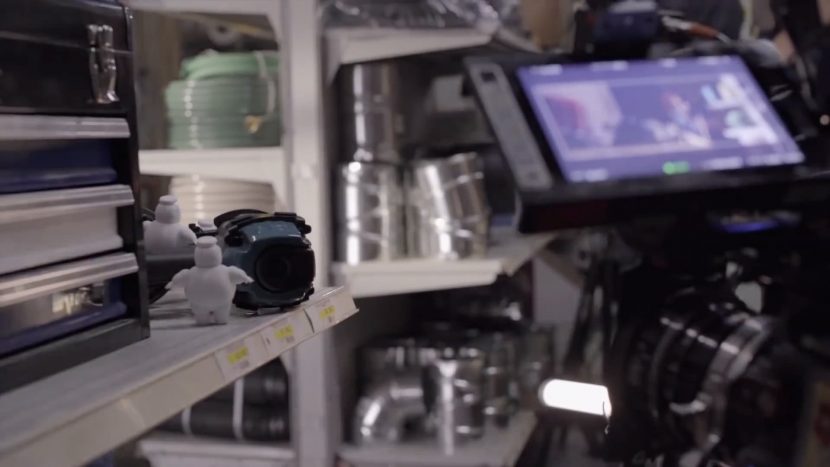
The design of the Mini Stay Puffs was clearly a reference to the 1984 film, but the character design could not just be scaled. “In honoring the simplicity of the original film, we wanted the silhouette of Muncher, Terror dog and the Mini Marshmallow Men to be so clean that you know them by the silhouette and so that a kid could draw them,” Sheena explains. To allow these characters to walk the legs needed to be altered. and an additional knee joint added that was not needed in the original 1984 suit costume. This allowed the Mini Stay Puff guys to move quicker and less lumbering which worked for their physical size.
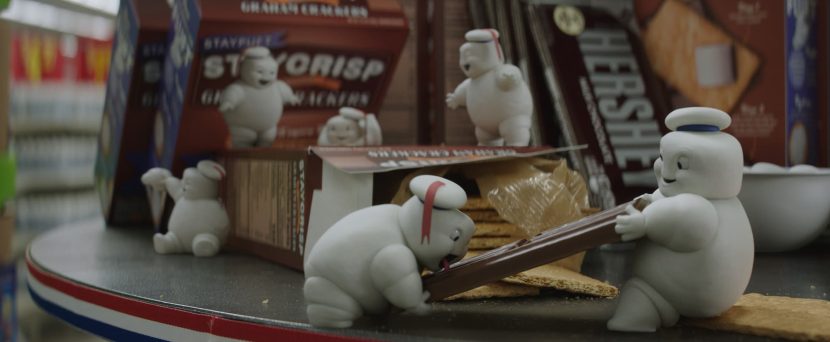
The 2 1/2″ Marshmallow men were fan favorites reconceived for a modern era. “It was great to give the fans what they wanted with an homage to the original films but then we do more when we use CG and here it makes sense,” says Alessandro. “These were the trickiest characters in the film, the design was obviously shrunk down from the original, but the problem was we did not know what personality to give these characters.” Alessandro wanted to not make these characters too cartoonish and similarly, he wanted to avoid making them physical horror characters like a man in a suit. To get the right personalities for the characters the team effectively auditioned character animators with a very open brief. “The front characters were closely scripted but for all the background men, we just said – have fun with it. I told the animators that every background character had to do something and have a deliberate action.”
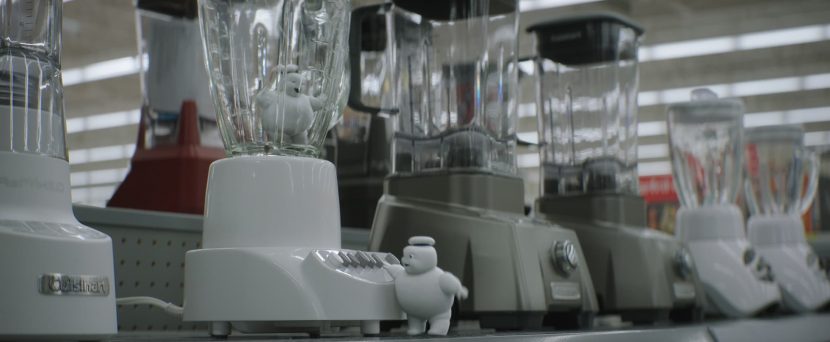
Terror dogs
Terror Dogs are the diabolical horned creatures that guard the kingdom of Gozer. Wanting the creatures to be practical on set, so the actors could react in real-time, a full-scale Terror Dog was used for the Walmart introduction of the character, and then it was converted to digital for the end sequence. A detailed clay sculpted Terror Dog was hand sculpted from 600 lb of clay.
This design was then handed to Brynn Metheney who is a concept artist specializing in creature and character designs for films. She took the Terror Dog design and reverse engineered the skeleton, and muscles so it could run and leap in 3D. Thus in the film, there is both the physical prop and the fully digital asset.
Muncher.
Phoebe and Podcaster find the metal-eating ghost named Muncher. Sheena had an interesting approach to the Terror Dogs and the other characters such as Muncher. She reasoned that while the film would use digital techniques, the mechanics of the old creatures from the original dictated certain camera angles and framing. If one examines the original Slimer, the character has a lot of cables and would require puppeteers to be just out of shot below the creature.
These limitations meant that the character was often framed from the waist up. These restrictions created a visual language for the cinematography and character animation. Her insight was to frame and film the new fully digital characters with a similar film language. Thus, the technology would be refined, the textures and details at a modern standard but new characters such as Muncher would seem to be from the same universe as the original Slimer, even when fully digital. This embraces the benefits of digital and yet makes the film familiar and enjoyable to an audience who grew up on the original films.
Creature designer Brynn Metheney developed and refined Muncher, with visual effects company DNEG bringing the character to life on screen. “When I first met with Jason, I remember he asked me, ‘What do you think makes a Ghostbusters character a Ghostbusters character?’ I feel like Ghostbusters characters were made at a time when design was more limited by technology, so they had to be really economical about what they were and the way they were put together. It’s all about being iconic, keeping it simple, and really getting down to the essence of what the character is.”
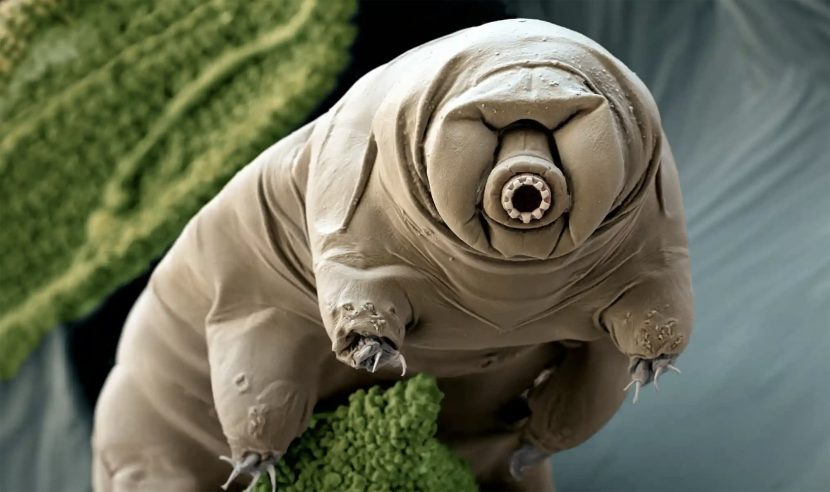
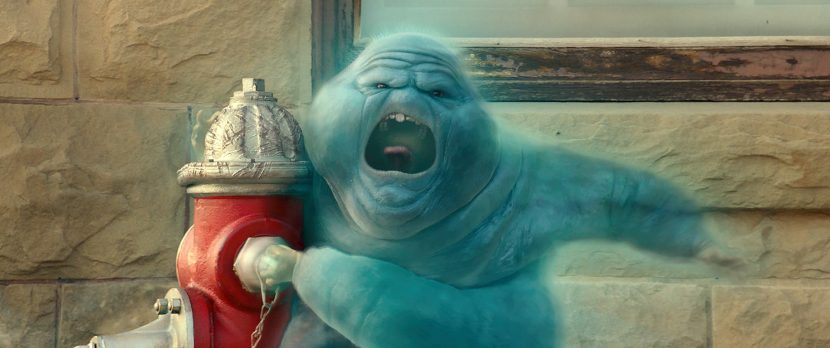
The design was keen to produce an icon feature that would also be referential to the original ghosts, especially slimer. Central to the design solution was Muncher’s face. “Jason wanted Muncher to feel like a lazy, lethargic, grumpy little gremlin who was really into his metal,” says Metheney. When she showed him an illustration of a rotund ghost with a grumpy old face – an “old grandma vibe,” as Metheney recalls – the character began to take shape. “We always knew that he had a big mouth. In the beginning, he had four limbs, arms, and legs. Then his mouth moved to his stomach, and he suddenly was just a big stomach with two arms on top,” she continues. Later, when Sheena Duggal presented Reitman with reference images of Tardigrades, also known as water bears, Muncher’s final form came into focus as the chubby, microscopic, six-legged creatures gave Muncher his physique and appendages. “Muncher’s character was described to me by Jason as being like Chris Farley,” says Sheena. “He wanted him to go from cute to a monster in a heartbeat. I explored micro animals as reference and when I showed Jason a tardigrade he loved the idea, so that was the basis for Muncher.”
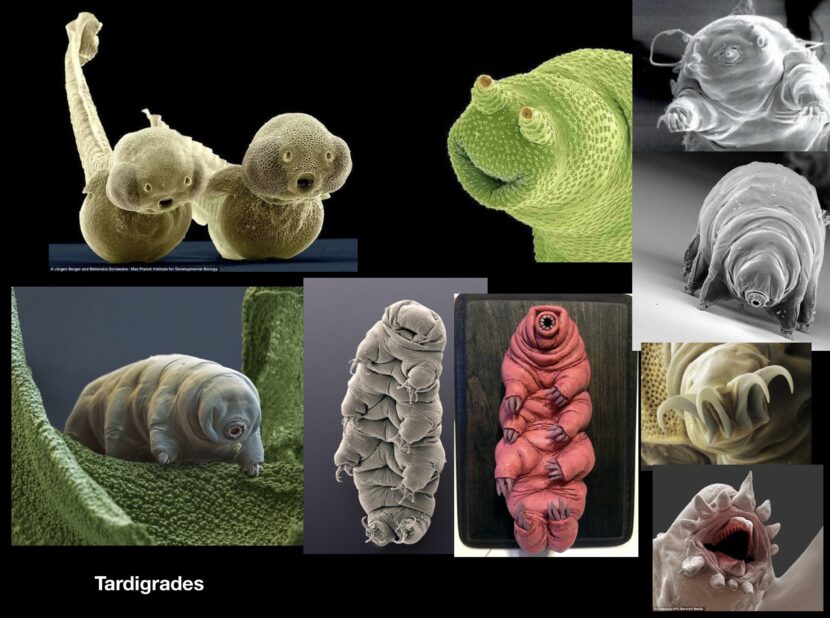
Ivo Shandor
One of the nice aspects of filming such a beloved and iconic franchise as Ghostbusters is the goodwill involved and the actors willing to play small parts or cameos such as Sigourney Weaver’s post-credit return. Another major actor who is set up to be a major character is. Ivo Shandor played by J.K. Simmons. The joke is that having set up the huge arrival of Ivo Shandor with such a major star, – he almost immediately dies by being ripped in half. The effect, in this case, was almost entirely practical, with a JK dummy requiring only mild paint work to hide the pre-rip seam on the mannequin.

